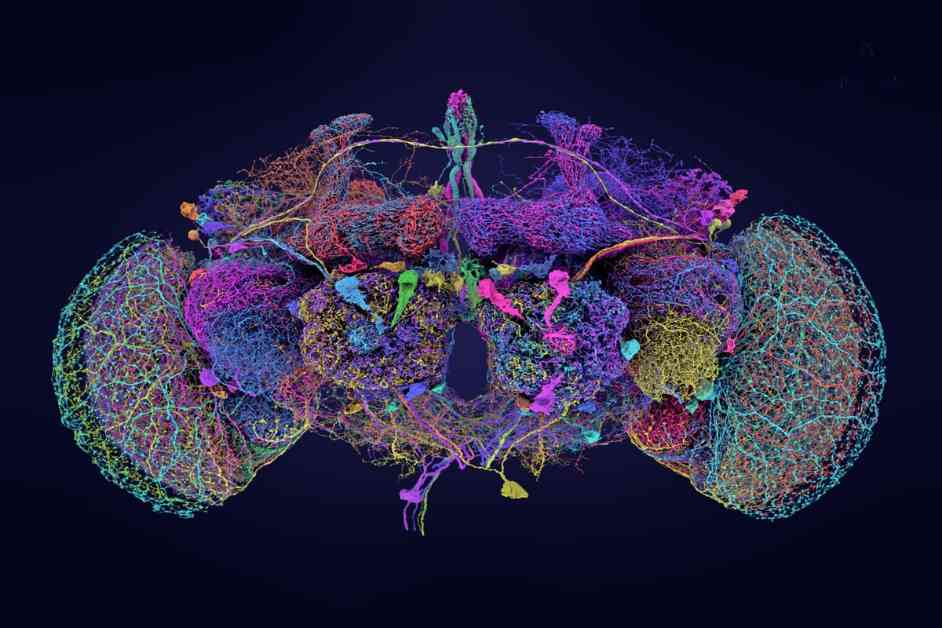Scientists have recently completed a comprehensive map of the brain of a single fruit fly, providing insights into the complex neural connections within the tiny insect’s brain. This intricate wiring diagram, known as a ‘connectome,’ reveals the connections between nearly 140,000 neurons and over 54.5 million synapses, which are essential for nerve cell communication.
The project, led by the FlyWire consortium at Princeton University, involved years of work using electron microscopy images of the fly’s brain slices. The team utilized artificial intelligence tools to piece together the data, but extensive manual proofreading was required to ensure accuracy. With over 3 million manual edits made by researchers and volunteers, the map was meticulously curated to identify 8,453 different types of neurons, including 4,581 newly discovered cell types.
One surprising finding from the connectome was the interconnected nature of sensory circuits in the fly brain. Neurons previously thought to be involved in specific sensory pathways were found to receive input from multiple senses, highlighting the complexity of neural networks in the brain. This discovery opens up new research avenues and questions for further exploration.
Researchers have already begun utilizing the connectome data to gain a deeper understanding of fruit fly behavior. By creating a computer model of the entire fruit-fly brain and simulating neural activity in response to taste stimuli, scientists were able to accurately predict the insect’s feeding behavior based on neural signals. This demonstrates the potential of the connectome to uncover insights into neural circuits and behavior in fruit flies.
While the connectome represents a significant advancement in understanding the fruit fly brain, there are limitations to consider. The map was constructed from a single female fruit fly, and variations between individual brains may exist. Future research aims to expand the connectome to include electrical connectivity between neurons and investigate male-specific behaviors, such as singing.
Despite the progress made with the fruit fly connectome, researchers acknowledge that there is still much to learn about the intricacies of neural communication and behavior in these tiny insects. The completion of this detailed map marks a significant milestone in neuroscientific research and sets the stage for further exploration of the complex neural networks in the fruit fly brain.










